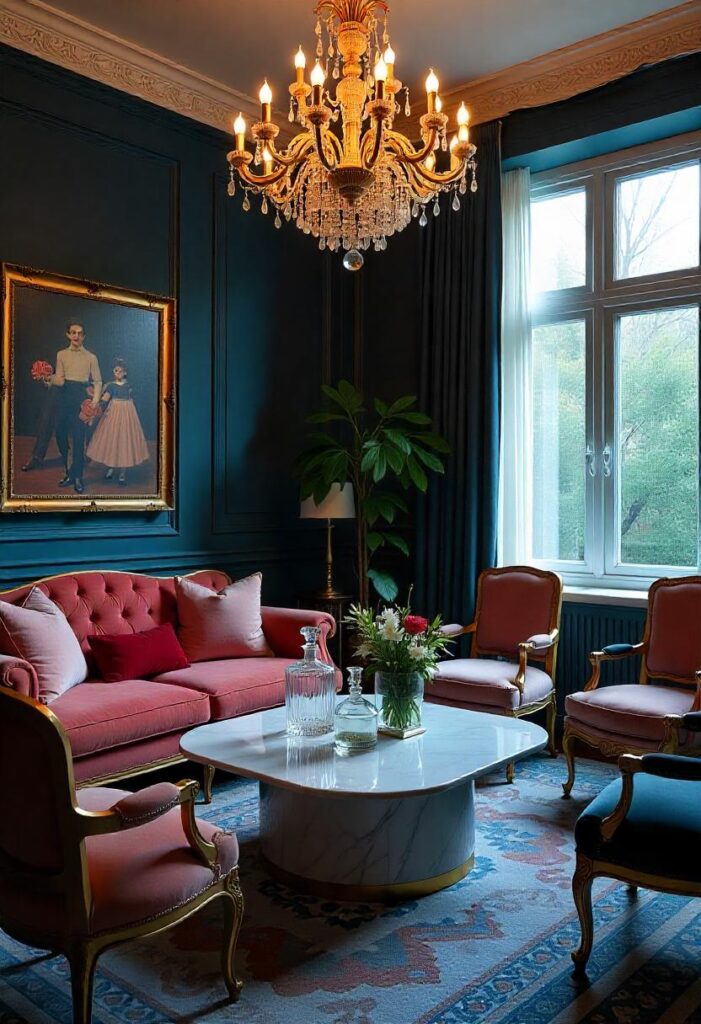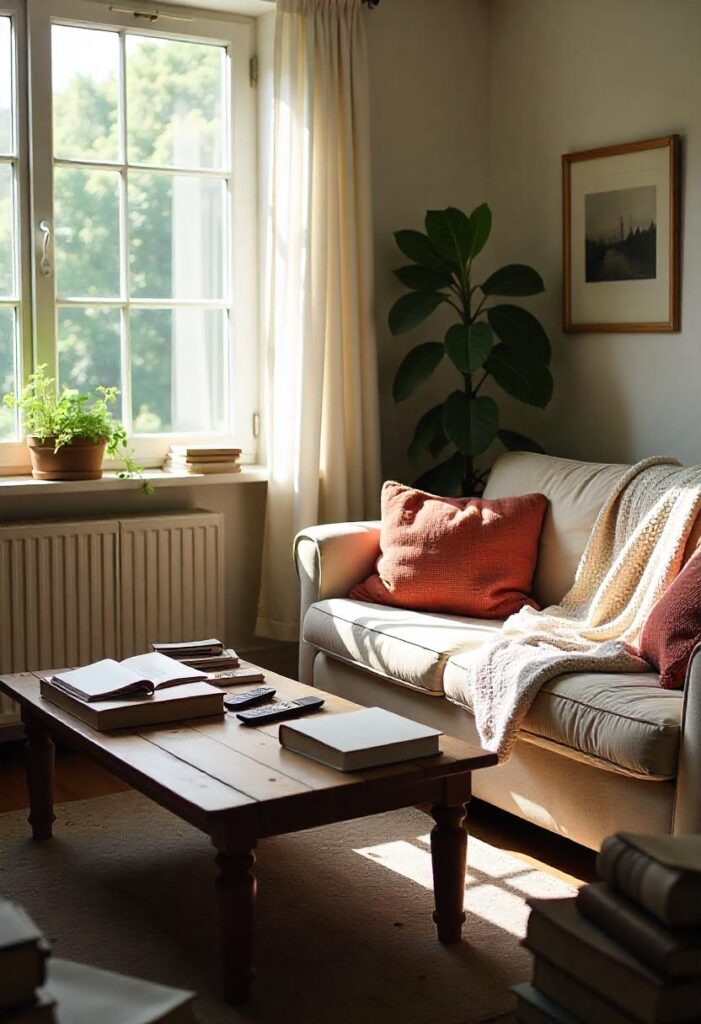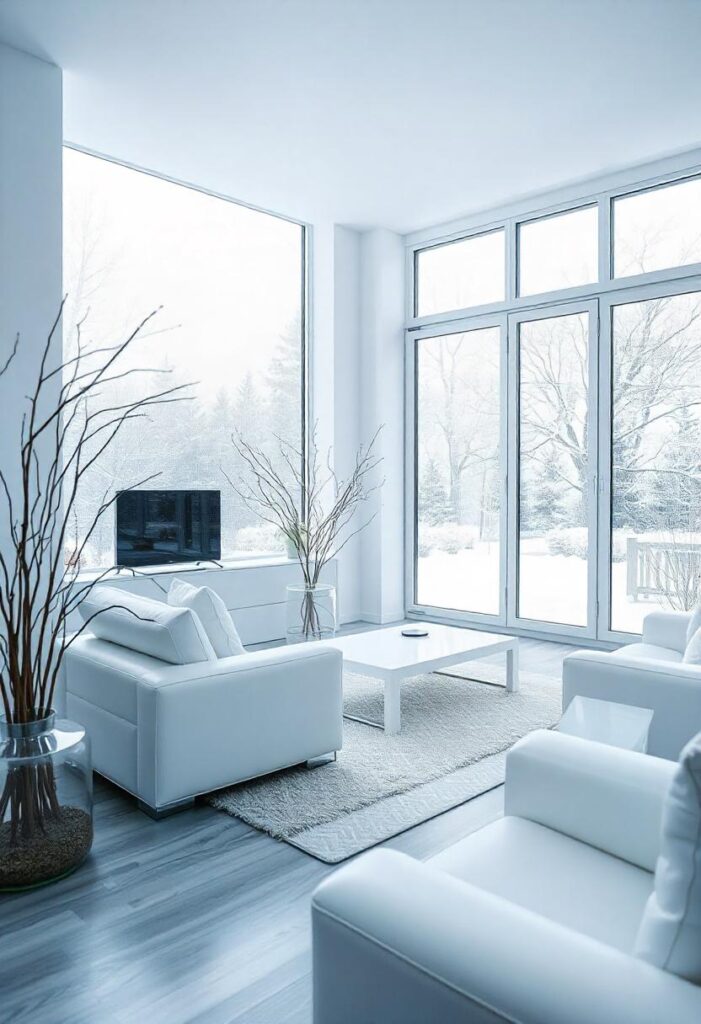A cozy living room can feel warm and inviting, but some certain common décor mistakes might make it appear more cramped than it actually is. If your space feels tight and cluttered, your décor could be the culprit. The good news? A few simple tweaks can help your living room feel more open and spacious.
Too Much Furniture
Having too many furniture pieces can make a room feel overcrowded. Even if you adore every chair, table, and shelf, excessive furniture can visually shrink the space. Large, bulky pieces take up more room than necessary.
Opt for fewer, more streamlined furniture pieces. A sleek sofa, a coffee table with slender legs, or floating shelves instead of bulky cabinets can create the illusion of more space. The goal is to allow easy movement and an open feel.
Overuse of Dark Colors
Dark tones can add elegance and coziness, but in a small living room, too much darkness can make the space feel even smaller. Dark walls, heavy curtains, and deep-toned furniture absorb light, making the room seem confined.
Instead, choose light and neutral shades like soft whites, light grays, and pastels to reflect light and create a more airy ambiance. If you love dark colors, incorporate them as accents—through pillows, rugs, or an accent wall—rather than dominant elements.
Insufficient Lighting
Poor lighting makes a room appear smaller. If your living room relies on just one overhead light, it can feel dull and flat. Shadows can further shrink the space by creating dark corners.
The solution? Layer your lighting. Use a mix of floor lamps, table lamps, and wall sconces to brighten various areas. Maximize natural light by swapping heavy drapes for sheer curtains to let sunlight in.
Cluttered Walls
A wall filled with art, shelves, and photos can add personality, but too many small frames or excessive décor can make the space feel busy and overwhelming.
Consider opting for fewer, larger statement pieces or a sizable mirror to reflect light and create the illusion of space. If using wall shelves, keep them minimally styled with select decorative items.
Oversized Rugs
A small rug can make a space feel disjointed, while an overly large one can overwhelm the room. A rug that covers almost the entire floor can visually box in the area, particularly in dark colors.
Choose a rug that complements your seating arrangement without overpowering the space. A good rule of thumb is to place the front legs of your sofa and chairs on the rug, leaving some exposed floor around the edges. Light-colored rugs also help in brightening the room.
Heavy Curtains
Thick, dark drapes can give a room a closed-off feel, blocking natural light and making the space seem weighed down. Even if you love dramatic curtains, heavy folds can make the room feel more confined.
Opt for sheer or light-colored curtains to maintain an open, airy feel. If privacy is a concern, consider blinds that can be pulled up during the day. Hanging curtains slightly higher than the window frame can also create the illusion of taller ceilings.
Excessive Small Accessories
Decorating with small vases, trinkets, and picture frames adds charm, but too many tiny items create visual clutter. Instead of enhancing the space, they can make it feel messy and overwhelming.
A better approach is to use fewer but larger decorative pieces. A statement vase or a bold decorative bowl can make an impact without contributing to clutter. Keeping surfaces tidy also promotes a more open and airy feel.
Lack of Storage Solutions
A living room filled with scattered books, remote controls, and miscellaneous items can feel chaotic. Cluttered spaces appear smaller because there’s no visual break for the eye.
Incorporate smart storage solutions, such as a coffee table with hidden compartments, decorative baskets for blankets, or wall-mounted shelves. Keeping the floor clear can make a significant difference in how spacious a room feels.
Poor Furniture Arrangement
The way furniture is positioned can greatly impact the perception of space. Pushing everything against the walls can make a room feel flat, while crowding furniture too closely together can create a cramped environment.
Rearranging furniture to achieve better balance can help open up the space. Allowing gaps between pieces, floating furniture slightly away from the walls, and ensuring clear pathways can make a room feel larger. Experimenting with angled placement or multifunctional furniture can further enhance the sense of openness.
Final Thoughts
Some common décor mistakes could be making your living room feel more confined than necessary. Too much furniture, dark colors, poor lighting, and clutter all contribute to a cramped space. The good news? Simple adjustments—such as choosing lighter hues, improving lighting, and optimizing storage—can make a big difference. With the right décor, your living room can feel open, airy, and inviting.










